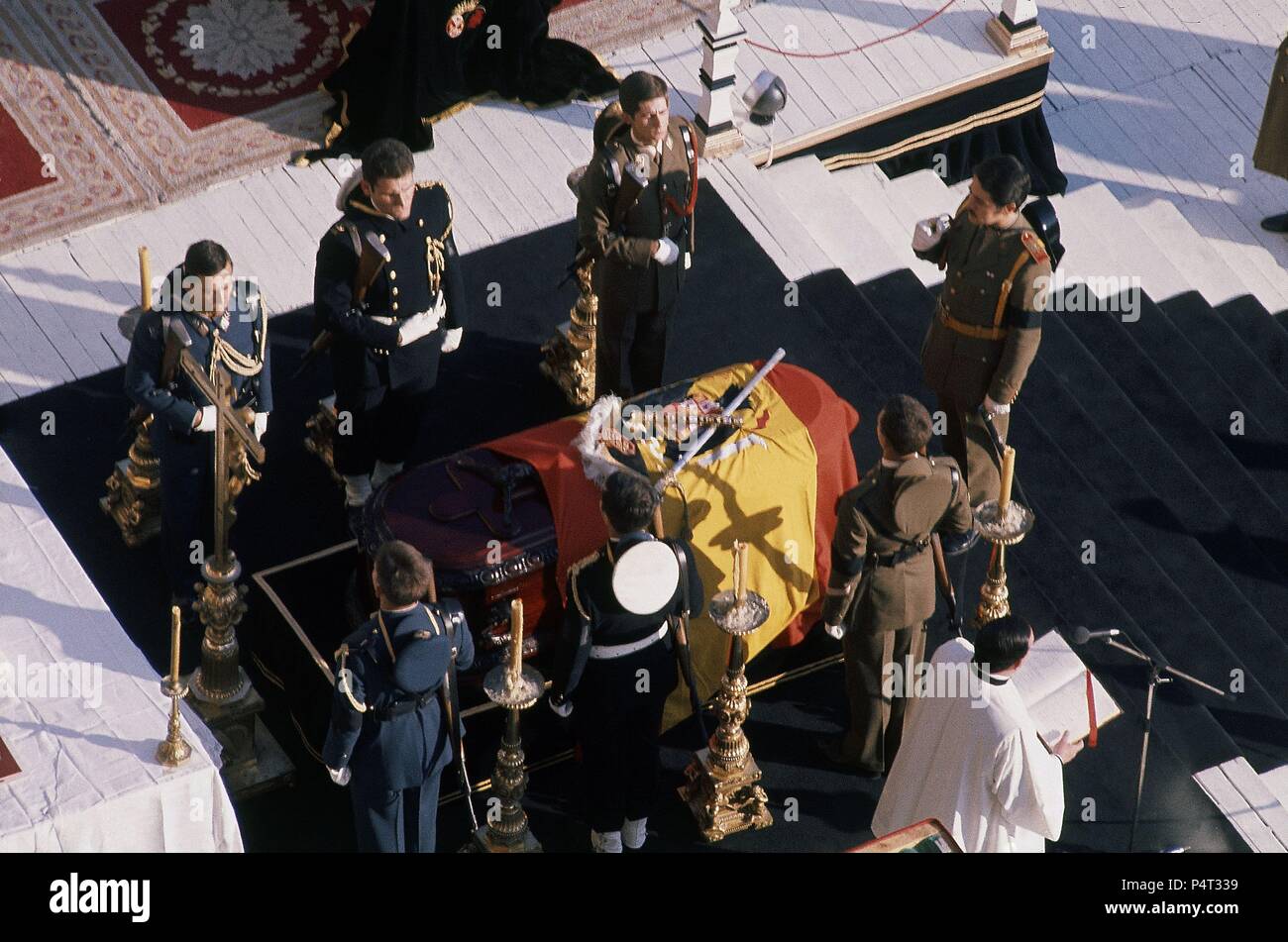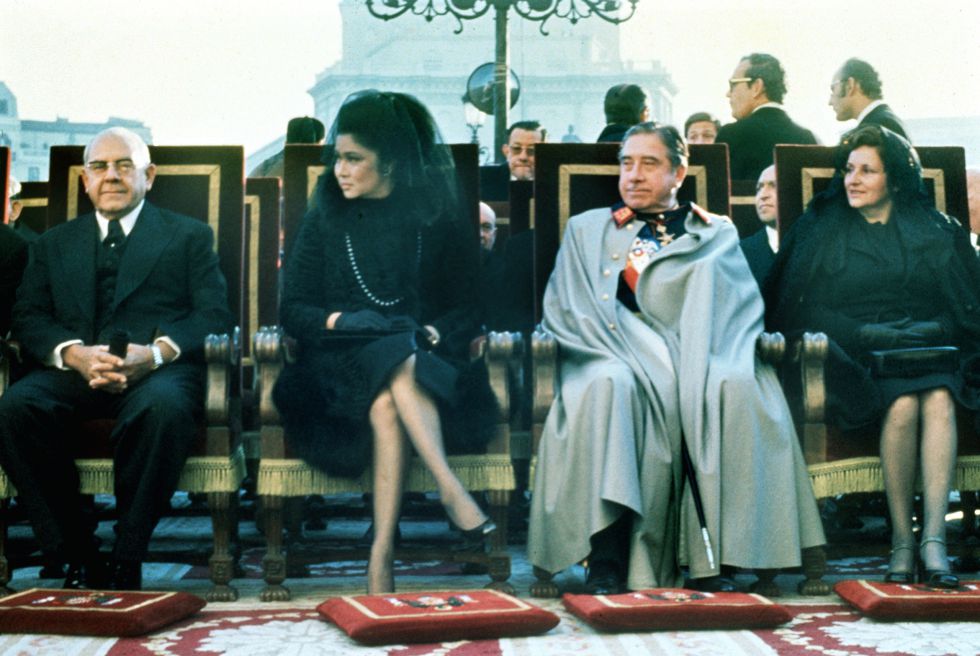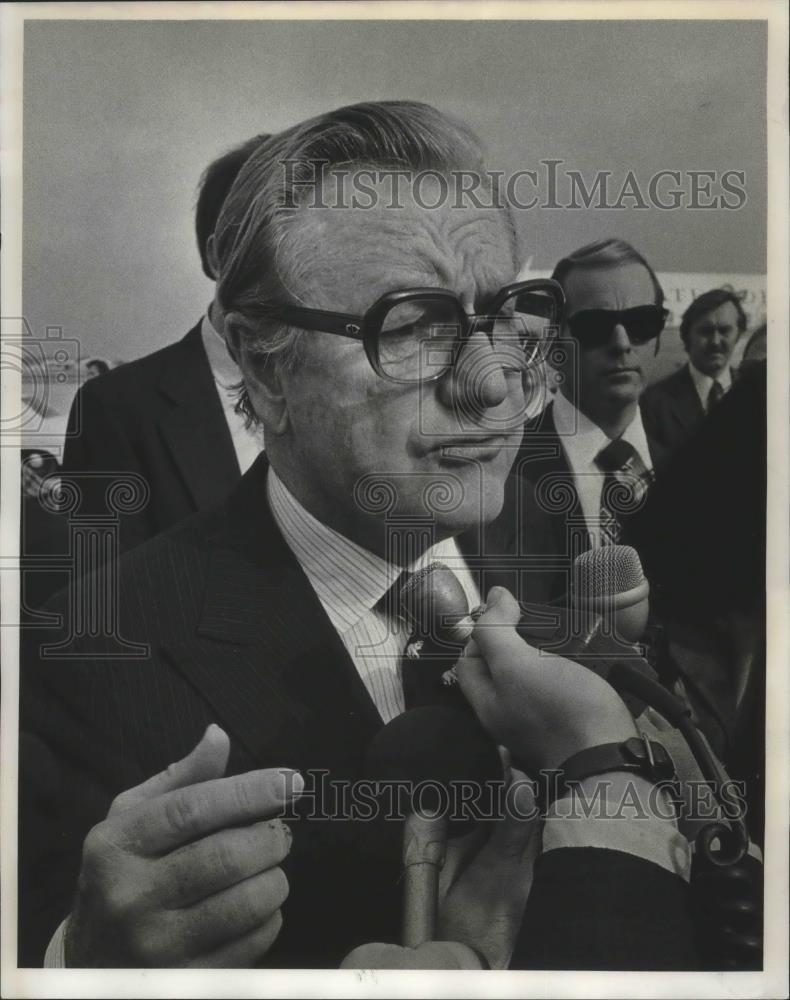Highlights of President Rockefeller's State Visit to the Republic of Indonesia (December 5-6, 1975)
*Friday, December 5, 1975: Air Force One touched down on at Halim International Airport for a brief visit to the Republic of Indonesia at the invitation of Indonesian President Suharto. Rockefeller and Suharto were to meet for the third time in less than six months (when Rockefeller was Vice President in June 1975, where they met face-to-face at Camp David when then-President Gerald Ford introduced Suharto to members of the Ford administration). They also met during the State Funeral services of President Ford on September 12th, it was during that time when Suharto personally invited both President and First Lady Rockefeller to visit Indonesia, which they both accepted.
Upon arrival at the Halim International Airport from their four-day visit to Taiwan, President Nelson Rockefeller accompanied by his wife, First Lady Happy Rockefeller; their two sons, Nelson Rockefeller, Jr., and Mark Rockefeller; US Secretary of State Malcolm Wilson; National Security Adviser Brent Scowcroft, etc., were welcomed by Indonesian President Suharto and his wife, Indonesian First Lady Siti Haritnah as well as members of the Indonesian President's Cabinet and high-ranking government officials, members of the Diplomatic Corps and some Americans in Jakarta. President Rockefeller was then afforded full ceremonial honors including the 21 Cannon Salute.
Later in the evening, a State Dinner in honor of President and First Lady Rockefeller was held at Istana Negara (State Palace). The dinner was followed by a cultural performance highlighted by dances from Sumatra and Java. In the dinner toast, President Suharto expressed that the visit of President Rockefeller could further enhance the mutual understanding to the numerous world and regional problems and providing concrete substance for mutually beneficial cooperation in various fields. He said that with the end of the Vietnam War, although there still exists deep concern regarding the possibility of disturbances threatening the security and stability of various countries and regions, the Southeast Asia region is now facing a new era with all kinds of new challenges and opportunities. The close and mutually beneficial cooperation between the United States and the Republic of Indonesia will hopefully stimulate the attainment of progress, justice tranquility and solid stability in this region, Suharto continued during his remarks.
In response, President Rockefeller said the United States' prosperity and progress linked with the various populations, the dynamic economics, the abundant resources and the rich cultures of this great region. "I have come here because of America's strong commitment and continuing interest in your country's security and well-being. The relationship between the United States and the Republic of Indonesia has involved the common concern for the right of every nation to pursuing their own destiny on its own independence and sovereign causes. We share dedication to peace in Asia and the world. We share a commitment to economic and social progress...... We share the realization that internal cooperation is essential for international security and prosperity." The President continued to say that in the complex time of change, America looks to its relationship with friends during tough times as well as good times. "Indonesia is such a great friend," Rockefeller added during his remarks at the State Dinner. Adding further, Indonesia has exemplified strength and self-reliance as well as international leadership and responsibility. "We respect your non-alignment and your goal of national resiliency. We also admire your contribution to regional peace. We value your friendship." Rockefeller said as a round of applause from the guests and distinguished guests at the State Dinner inside the Istana Negara.
*Saturday, December 6, 1975: The next morning, there was a joint communique following the exchange of views on international, regional and bilateral issues between the United States and Indonesia, it was announced that President Suharto and President Rockefeller had agreed to expanded dialogue between the two countries' respective governments, through periodic consultations at the ministerial level.
The Heads of State concluded their meetings and their decisions to establishing an expanded dialogue marked an important and significant step toward developing and strengthening close and friendly ties between the governments the peoples of the Republic of Indonesia and the United States of America. During the meeting, President Rockefeller expressed the US intention to continuing to providing substantial aid in support of Indonesia's developmental efforts. In the communique, President Rockefeller also expressed his deep appreciation for the hospitality extended to him, Mrs. Rockefeller and entourage during the President's trip to Indonesia.









.jpg)


